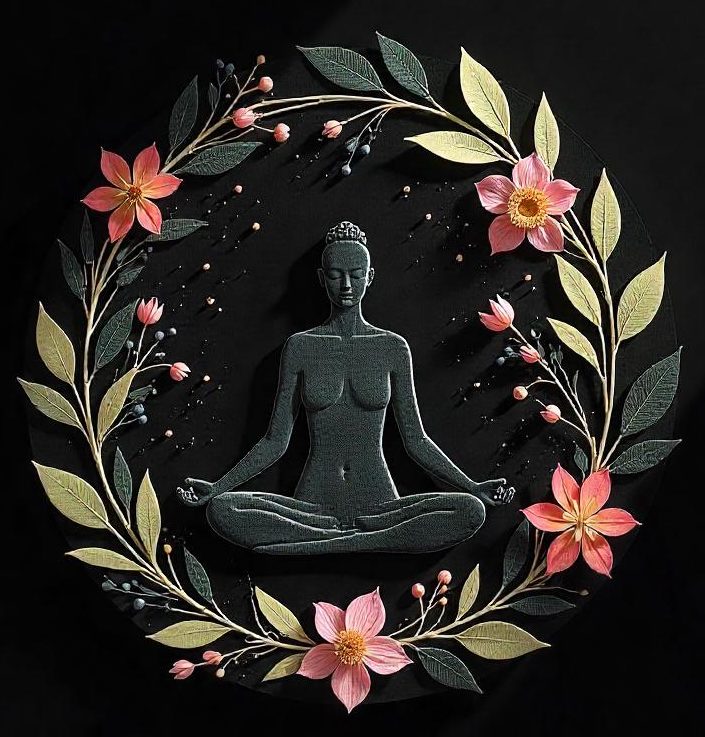In our fast-paced world, stress and anxiety have become everyday challenges. Mindfulness offers a way to find calm and reconnect with the present moment. By practicing mindfulness, you can cultivate a sense of inner peace, improve mental clarity, and enhance your overall well-being. This guide explores the power of mindfulness and provides simple techniques to help you integrate it into your daily routine.
What is Mindfulness?
Mindfulness is the practice of bringing your full attention to the present moment, without judgment. It involves observing your thoughts, emotions, and bodily sensations with openness and curiosity. Rather than being overwhelmed by thoughts of the past or worries about the future, mindfulness teaches us to live fully in the “now.”
Benefits of Mindfulness
- Reduces Stress and Anxiety: Mindfulness helps lower cortisol levels, the body’s primary stress hormone, resulting in a calmer mind and body.
- Improves Focus and Concentration: By training your attention, mindfulness enhances focus, making it easier to stay on task.
- Boosts Emotional Resilience: Mindfulness fosters self-awareness and emotional regulation, helping you respond calmly in challenging situations.
- Enhances Overall Well-being: Practicing mindfulness can improve mood, increase patience, and enhance the quality of sleep.
Mindfulness Techniques to Calm the Mind and Body
1. Breath Awareness
Breath awareness is one of the simplest yet most powerful mindfulness practices. By focusing on your breathing, you bring your attention to the present moment, calming the nervous system and easing stress.
- How to Practice: Find a quiet place to sit comfortably. Close your eyes and take a deep breath. Observe the sensation of the air entering and leaving your body. If your mind wanders, gently bring it back to the breath.
- Tip: Practice this for 5-10 minutes daily to build a habit of mindful breathing.
2. Body Scan Meditation
Body scan meditation is a technique that involves mentally scanning each part of your body, bringing awareness to areas of tension and promoting relaxation.
- How to Practice: Lie down or sit comfortably. Start at the top of your head and slowly move down, paying attention to sensations in each part of your body. If you notice tension, breathe into that area and consciously relax it.
- Tip: This practice is especially helpful before bed to release physical stress and improve sleep.
3. Mindful Walking
Mindful walking is a great way to practice mindfulness on the go. By bringing attention to the sensations of walking, you can ground yourself in the present moment.
- How to Practice: As you walk, focus on the sensations in your feet—how they lift, move forward, and touch the ground. Observe your surroundings, such as the sounds, smells, and sights, without getting lost in thought.
- Tip: Take a few minutes each day to walk mindfully, even if it’s just around your home or office.
4. Guided Visualization
Visualization involves using mental images to create a sense of calm and relaxation. By picturing a peaceful place, you can ease stress and shift your mind away from worries.
- How to Practice: Sit comfortably and close your eyes. Imagine a serene place, such as a beach or forest. Picture every detail—the sounds, colors, and sensations. Let yourself feel immersed in the peaceful setting.
- Tip: You can find guided visualization exercises online to help you get started.
5. Loving-Kindness Meditation
Loving-kindness meditation is a practice of cultivating compassion and positive emotions toward yourself and others. It helps reduce stress and promotes a sense of connection.
- How to Practice: Sit quietly and focus on your breath. Repeat phrases like, “May I be happy, may I be healthy, may I be at peace.” Then extend these wishes to loved ones, friends, and even strangers.
- Tip: Practicing loving-kindness can improve mood and reduce feelings of loneliness.
Tips for Building a Mindfulness Routine
- Start Small: Begin with just a few minutes each day and gradually increase your practice time.
- Be Consistent: Try to practice mindfulness at the same time each day, whether in the morning or before bed.
- Accept Distractions: It’s natural for your mind to wander. Gently redirect your focus back to your practice without judgment.
- Practice Self-Compassion: Be patient with yourself as you build your mindfulness skills. Progress may take time, but each step is valuable.
Bringing Mindfulness into Daily Life
Mindfulness isn’t limited to formal meditation. You can bring mindfulness to any part of your day by simply focusing on the present moment. Whether you’re eating, working, or spending time with loved ones, try to be fully engaged in each experience.
Mindfulness offers a pathway to a calmer, more balanced life. By taking a few moments each day to be present, you can cultivate peace of mind and resilience. Keep following PeakWellness Journey for more tips on enhancing well-being and finding harmony through mindfulness.
Start your mindfulness journey today and see how it can transform your life.



